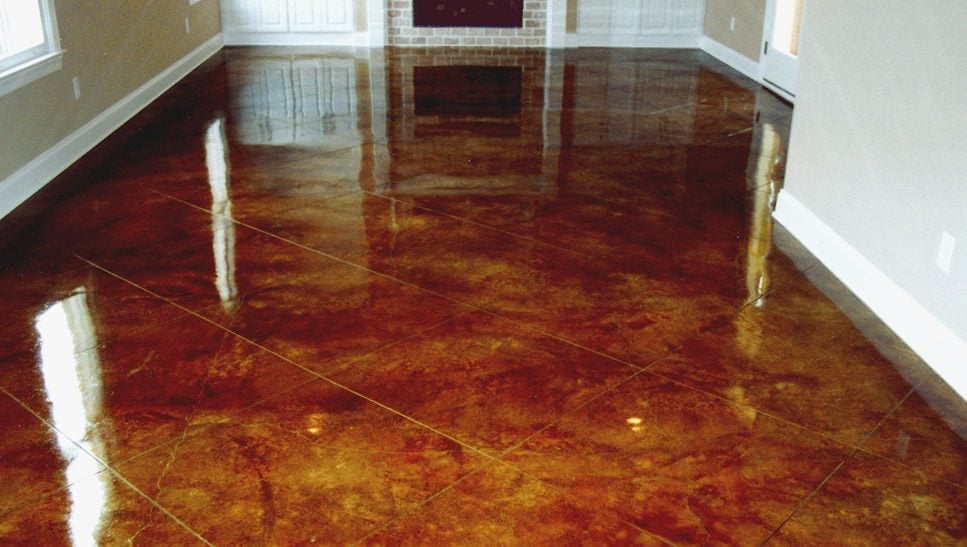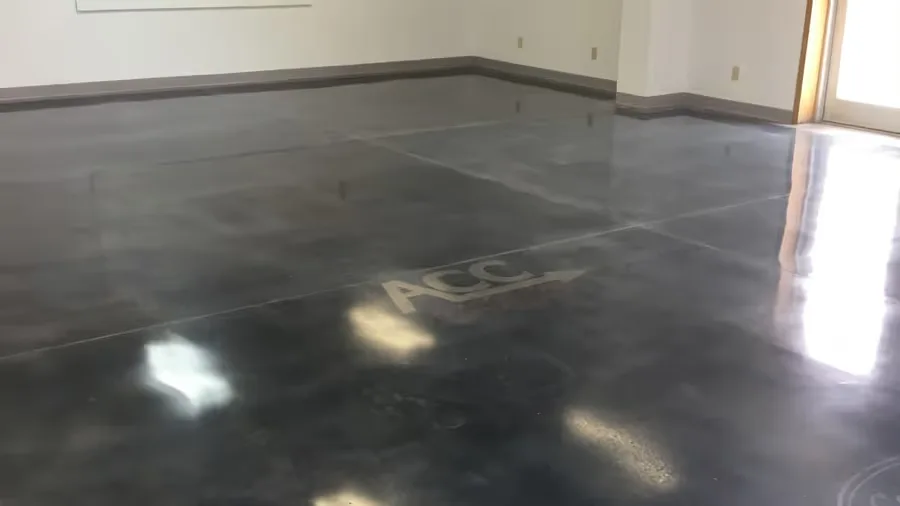Professional Stained Concrete Work That Elevates Your Property Value
Professional Stained Concrete Work That Elevates Your Property Value
Blog Article
Why Neighborhood Stained Floor Covering Is the Perfect Option for Sustainable Home Renovation
In the realm of sustainable home improvement, regional tarnished floor covering has arised as a preferred option among ecologically conscious property owners. As a cost-effective investment with lowered upkeep demands, it raises a thought-provoking question: could this be the perfect solution for sustainable housing?
Comprehending the Principle of Neighborhood Tarnished Floor Covering
While the idea could seem unique to some, regional discolored flooring is an ingenious approach to home renovation that combines visual appeals, toughness, and sustainability. The term describes using locally sourced timber that is discolored to attain an unique visual appeal. The staining procedure not just enhances the all-natural charm of the wood grain however also includes a layer of protection, raising the longevity of the floor covering. This technique is taken into consideration lasting as it reduces the requirement for transport of raw products from remote locations, thus decreasing carbon impacts. Furthermore, using regional timber species commonly supports regional economic climates and advertises liable woodland administration practices. This principle, for that reason, uses property owners an ecologically liable choice without endangering aesthetic allure or sturdiness.
The Visual Appeal of Regional Discolored Floor Covering
Why is local stained flooring getting popularity for its aesthetics? Neighborhood discolored flooring supplies a diverse variety of patterns and shades, reflecting the natural beauty and variants of the neighborhood timber types utilized. Ultimately, the appeal of regional stained flooring exists in its capacity to change homes into distinct, aesthetically appealing rooms while advertising sustainability.
Environmental Effects of Local Tainted Flooring
The environmental ramifications of local discolored floor covering include two significant elements: reducing carbon impact and waste minimization benefits. Using in your area sourced products for discoloring not only lessens transport emissions, yet likewise advertises sustainable forestry techniques. Furthermore, the waste minimization aspect enters play as these flooring types typically have a longer life expectancy, reducing the regular need for replacements and the waste related to it.
Decreasing Carbon Impact
As house owners turn to more sustainable alternatives, regional tarnished flooring becomes a practical option to reduce carbon footprint. This type of floor covering greatly uses in your area sourced products, which dramatically reduces the requirement for transport. Consequently, this lowers exhausts connected with freight transportation, adding to lower levels of greenhouse gases in the environment. The procedure of discoloring the floor covering, rather than making use of artificial coverings, involves less chemicals and much less energy-intensive procedures. This causes a decrease in carbon emissions throughout the manufacturing process. Going with local tarnished flooring demonstrates an efficient step in advertising environmental sustainability, highlighting a substantial means home owners can add to combating environment change from the comfort of their own homes.
Waste Reduction Advantages
Although often forgotten, waste minimization is one more substantial advantage of regional stained floor covering. Furthermore, the discoloration procedure utilizes less resources and generates less waste contrasted to producing new flooring products. The selection of local discolored floor covering not just improves homes yet additionally underpins a commitment to sustainable living and waste reduction.
The Toughness and Maintenance of Local Tainted Floor Covering

The Cost-Effectiveness of Local Tarnished Floor Covering
While local discolored floor covering may at first seem more expensive than various other choices such as carpet or laminate, its long life and resilience quickly turn it right into a cost-efficient selection. The upfront expense is typically countered by the reduction in maintenance costs over time. Unlike carpetings that require normal deep cleaning or laminate that might need substitute after a couple of years, discolored floors are constructed to last, minimizing the demand for pricey repair work or replacement. Regional sourcing of materials minimizes transportation prices, adding to both monetary savings and a reduced carbon impact. For homeowners seeking a sustainable, cost-effective service for their floor covering needs, regional stained floor covering emerges as a premium, lasting financial investment that repays with time.

Real Life Instances of Sustainable Residences With Neighborhood Stained Flooring
In the world of sustainable home renovation, regional discolored floor covering has actually become a prominent choice. To additionally show its advantages, several reality instances of green homes that have efficiently included this floor covering technique will certainly be highlighted. These study supply substantial evidence of the advantages and influence of using neighborhood discolored flooring in sustainable homes.

Display: Eco-Friendly Floor Covering Residences
Scanning the globe, one can discover various homes that embody the concept of green living with making use of neighborhood discolored flooring. In the heart of Denmark, a minimalist home prides itself on its oak-stained floorings, sourced and treated check these guys out within the local area. Across oceans in copyright, a modern-day residence showcases its rich, maple-stained flooring, a testimony to the plentiful neighborhood wood supply. Down under in Australia, a beach residence radiates with its eucalyptus-stained floors, reflecting the nation's indigenous flora. These homes not just showcase the visual versatility of neighborhood tarnished flooring but additionally its contribution to a more sustainable lifestyle. Each flooring narrates of respect visit this site for the setting, proving that style and sustainability can certainly exist together.
Neighborhood Stained Floor Covering Advantages
The obvious attraction of neighborhood tarnished flooring expands past its aesthetic appeal, as it also offers significant advantages to both house owners and the setting. Another example is a green-certified home in Austin, Texas, where locally sourced walnut was discolored and made use of for flooring, contributing to the home's LEED accreditation.
Verdict
To conclude, local stained flooring is a lasting and viable option for home enhancement. This option sustains regional economies, minimizes ecological impact, and enhances home visual appeals. Its sturdiness makes sure longevity, decreasing maintenance prices in the lengthy run. With its special blend of ecological, economical and visual benefits, neighborhood discolored flooring is a clear option for property owners looking for a sustainable, cost-efficient and visually attractive home improvement service.
In the realm of sustainable home improvement, neighborhood stained flooring has actually emerged as a preferred option amongst ecologically conscious homeowners. Local tarnished flooring uses a diverse array of shades and patterns, reflecting the all-natural beauty and variants of the regional wood types utilized. The selection of local tarnished floor covering not only beautifies homes yet likewise underpins a commitment to lasting living and waste decrease.
For house owners looking for a lasting, economical remedy for their floor covering needs, neighborhood tarnished flooring arises as a remarkable, long-term investment that pays off over time. Commercial Stained Concrete Floors.
With its unique mix of ecological, cost-effective and aesthetic advantages, local tarnished floor covering is a clear selection for property owners looking for a sustainable, economical and aesthetically enticing home enhancement solution.
Report this page